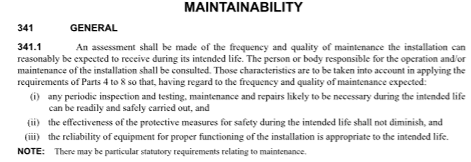
What attention, do you suppose, is given to 341.1 indent (iii) and how do you normally address it? For example, we just carried out an annual inspection and test on the emergency lighting system in a new office building. The installation is approximately 18 months old and this was the first check to be made on the system. Of the 64 self-contained LED units installed 18 were faulty, all but one being non-maintained. Well-known manufacturer. A failure rate of 28% after 18 months doesn't sound like indent (iii) has been met, unless the notion of "intended life" and "reliability" have a connotation different to my interpretation.
I know I posted about this before with a similar situation. However, the difference this time is that the complete installation was specified by a consultant. I could see the outcome being the manufacturers providing the contractor with free replacement units and the contractor expected to fit them. The contractor has no chance of getting paid by the client who, in my view, is mis-directing his ire at the contractor. My view would be that the consultant specified the fittings and signed the design section of the EIC so it is he who should be taken to task.
